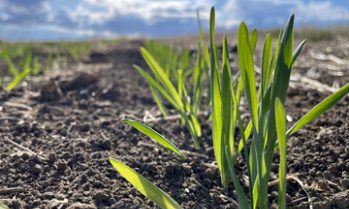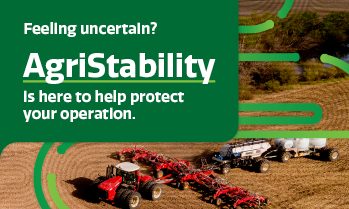Looking to increase your coverage, but not your cost?
Article written by SCIC
(also available in 2023 Yield Saskatchewan publication presented by The Western Producer)
Since 2005, the Saskatchewan Crop Insurance Corporation (SCIC) has offered the Crop Averaging Program as an option for producers providing Crop Insurance coverage for a basket of crops grown. Crop averaging means producers can combine the production losses on all eligible crops in return for higher coverage compared to insuring each crop separately.
In recent years, the Crop Averaging Program increased in popularity with Saskatchewan producers as participation rose from 550 customers in 2021 to over 900 customers in 2022.
Increased crop prices created a much higher liability and possible claim payout. In 2022, indemnities paid to date were approximately 40 per cent higher than indemnities paid the previous year. These two years are the highest liability and claim payouts for the Crop Averaging Program option historically.
How the Crop Averaging Program works
The Crop Averaging Program coverage levels are available at 50, 60, 70 and 80 per cent. In some cases, producers could receive more than 10 per cent additional coverage (to a maximum of 90 per cent), depending on their own crop mix. Producers can select one coverage level, which is applied to all Crop Averaging Program crops. Coverage is determined by the number of acres of each crop and their dollar value, potentially giving the producer a higher dollar coverage. This option is great if you are interested in a total dollar coverage on a group of crops on the farm, rather than individual production guarantees on each crop.
Under the Crop Averaging Program, crops eligible for coverage include barley, Canada Prairie Spring wheat, canary seed, canola, identity-preserved canola, durum, extra strong wheat, field peas, flax, Hard White Spring Wheat, Hard Red Spring Wheat, lentils (large green, red and other), mustard (brown, oriental and yellow) and oats. This includes irrigated acres (excluding enhanced irrigation) as well as organic and pedigreed crops.
To estimate what coverage level might be attained, there is a Crop Averaging Program Calculator on SCIC’s website at: scic.ca/resources/calculators. You will need to know your long-term individual yield and how many acres you plan to seed of each crop. Then, the calculator will provide a Crop Averaging Percentage and total dollar coverage. Note: The calculator is an estimate; final Crop Averaging Program coverage will be calculated based on crops and acres reported on the Seeded Acreage Report.
Is the Crop Averaging Program right for you?
The Crop Averaging Program is an option available to producers to get more coverage for their premium dollar by insuring crops as a basket instead of each crop separately. The tradeoff is losses on single crops are not paid for if other crops have good yields. However, the Crop Averaging Program provides greater protection in disaster years when all crops are in a yield loss situation. Typically, producers insure three or more crops through the Crop Averaging Program option or have two insured crops within close proximity.
Claim situations may be less predictable through the Crop Averaging Program since a good crop could offset a poor one. If you prefer the assurance of having a claim paid in the event one crop fails, then the Crop Averaging Program may not be the right option for your farm. A Crop Averaging Program claim is paid based on the total value of crop harvested compared to the total dollar coverage on all crops. The dollar value is used to calculate the total production loss; the Crop Averaging Program does not provide a guarantee of market price. Producers must declare all production of all crops before a claim can be filed.
Crop Averaging Program must be selected by March 31
As with all Crop Insurance options, producers wishing to make changes to their existing Crop Averaging Program coverage or to insure crops through this option for the first time, must make this selection by March 31, 2023. All crops eligible for Crop Averaging Program will be insured if seeded.










